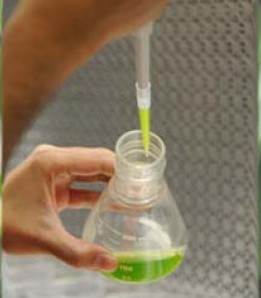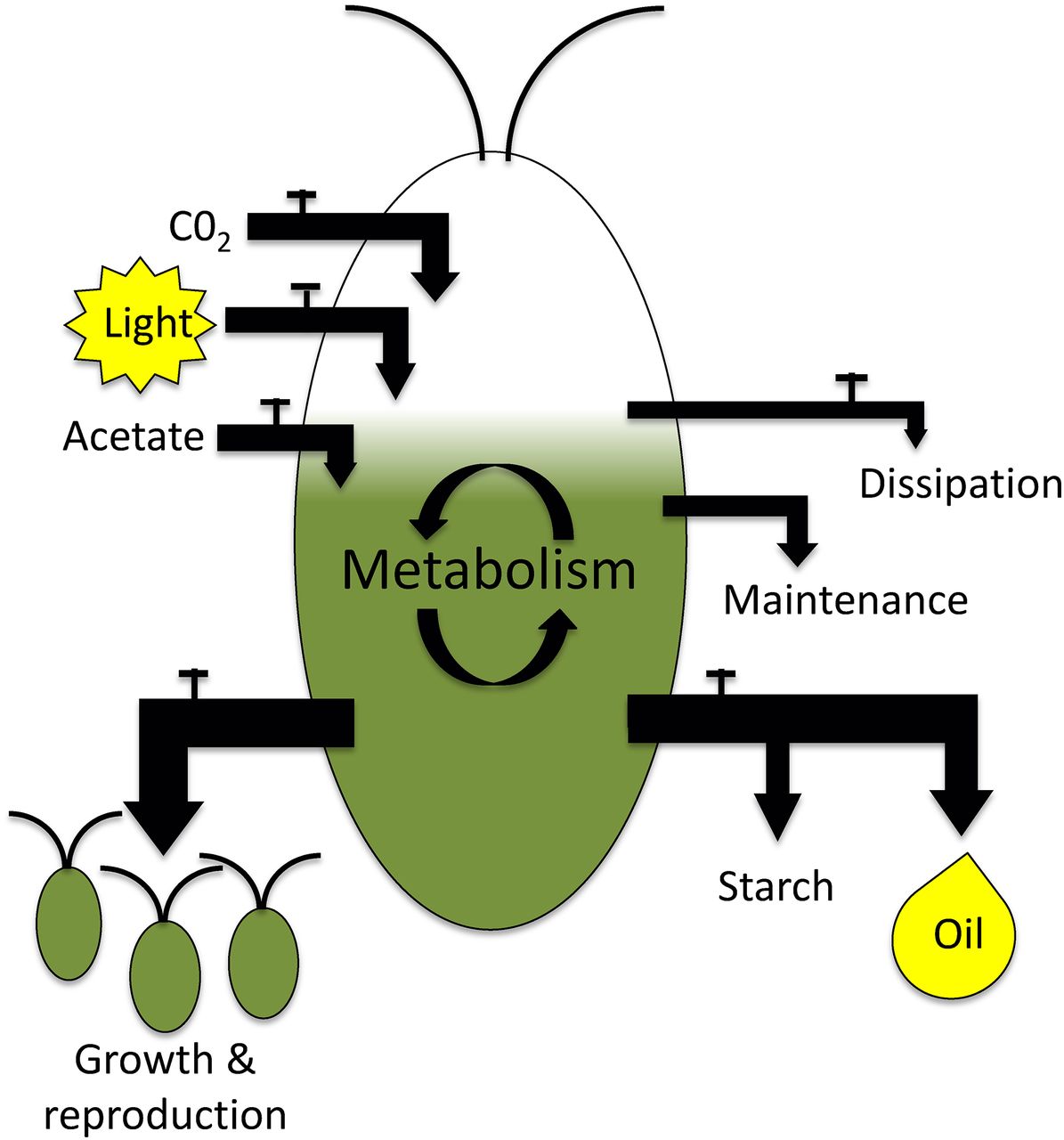Algal Biofuels

The widespread use of petroleum fuels contributes to climate change and is an unstable resource, so there has been growing interest in algal biofuel as an alternative. Photosynthetic microalgae have attracted interest as a biofuel due to several advantages that they possess:
1. Higher growth rate and higher biomass productivity than terrestrial plants.
2. The ability to accumulate much of their dry weight as energy-rich oil.
3. The ability to be grown on brackish water and requires less fresh water than terrestrial plants.
4. The ability to be grown on non-arable/marginal land, therefore does not compete with food production.
5. The ability to produce valuable co-products such as proteins and residual biomass after oil extraction, which may be used as feed or fertilizer.
Under stressful growth conditions such as nutrient stress, salt stress, temperature stress, etc., many algae accumulate the neutral lipid triacylglycerol (TAG) in lipid bodies in the cytoplasm. TAG can be converted to biodiesel fuel by transesterification of their fatty acids, thus making TAG a highly desirable compound. Thus, algae can be used to produce lipids for biofuels, and research concerning their production of TAG has increased in recent years.

Research in the Shachar-Hill lab concerns the response of the model microalga Chlamydomonas reinhardtii to nitrogen deprivation, which induces TAG production. C. reinhardtii serves as a model alga due to its well-understood physiology, its fully sequenced genome, and the availability of numerous molecular tools such as transformation methods, transformation markers, fluorescent reporter genes, and RNAi silencing. The Shachar-Hill lab has explored the interaction between photosynthesis and carbon accumulation and energy fluxes in C. reinhardtii during nitrogen starvation. Cell growth, biomass, starch levels, lipid levels, and photosynthetic function have been measured before and during nitrogen starvation. The lab is currently exploring the lipid metabolism of C. reinhardtii during nitrogen resupply, including the fate of carbon molecules that were stored in TAG during nitrogen deprivation.
Figure taken from:
Juergens, M. T., Disbrow, B., & Shachar-Hill, Y. (2016) The Relationship of Triacylglycerol and Starch Accumulation to Carbon and Energy Flows During Nutrient Deprivation in Chlamydomonas. Plant Physiology, pp-00761. doi: https://doi.org/10.1104/pp.16.00761